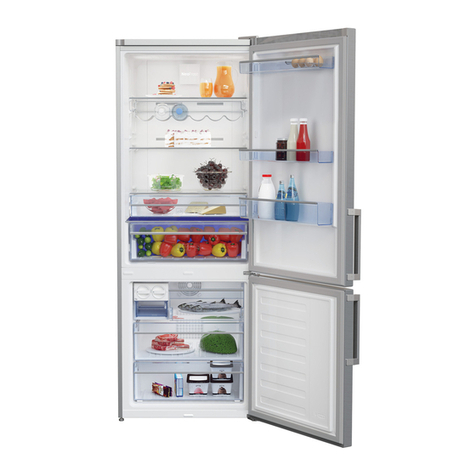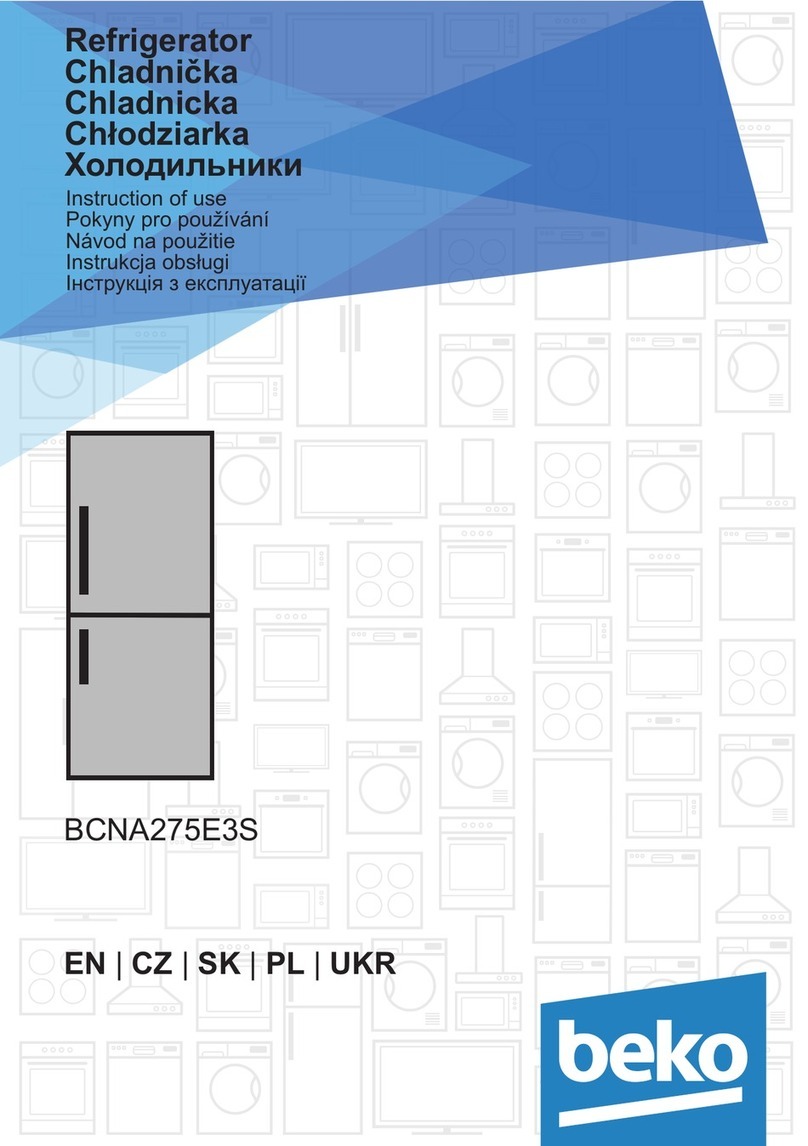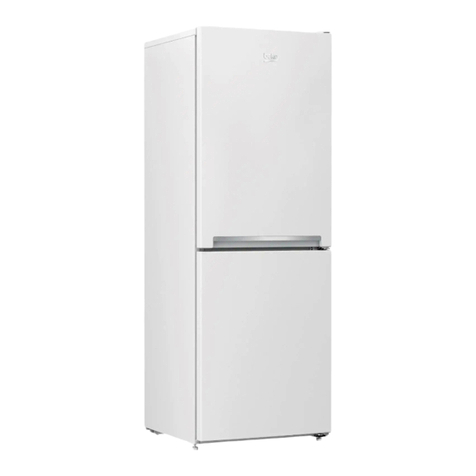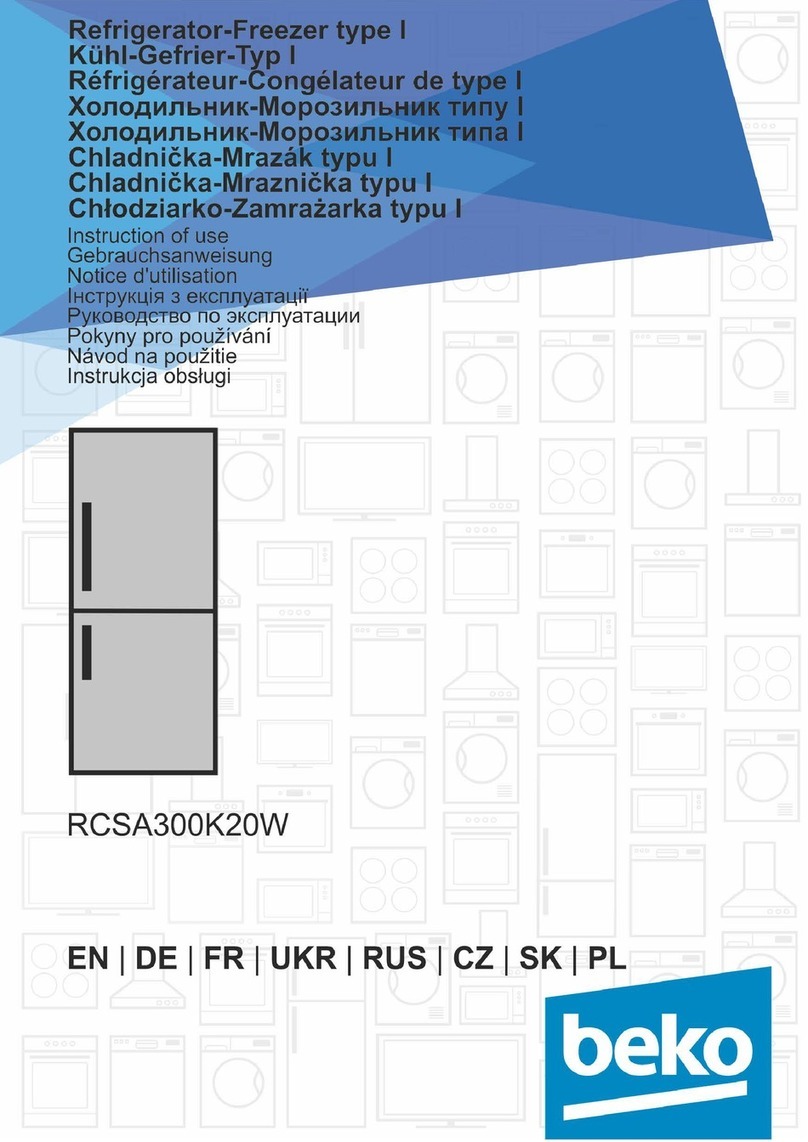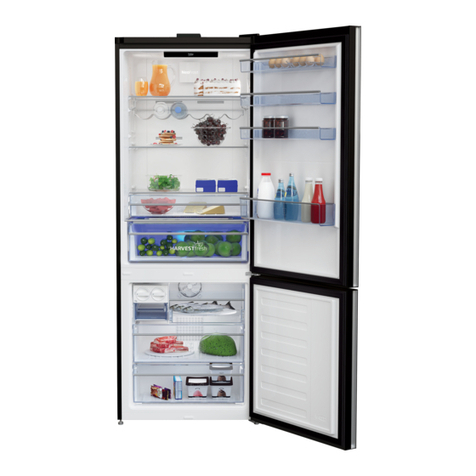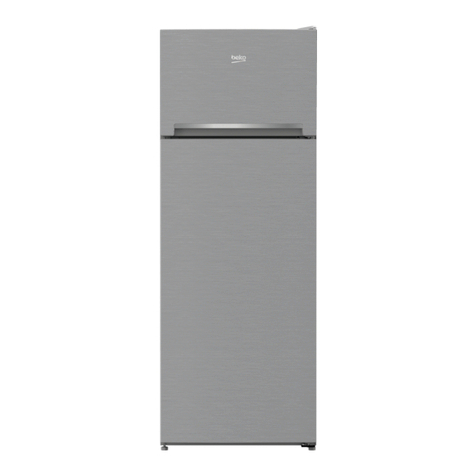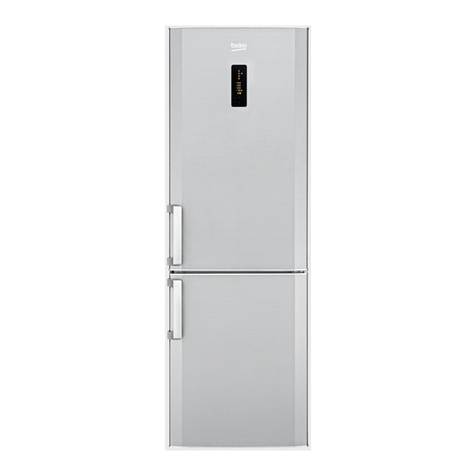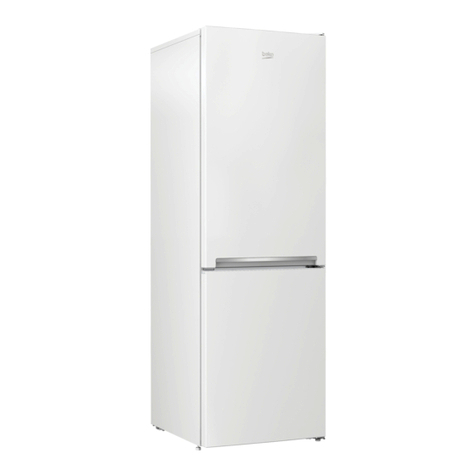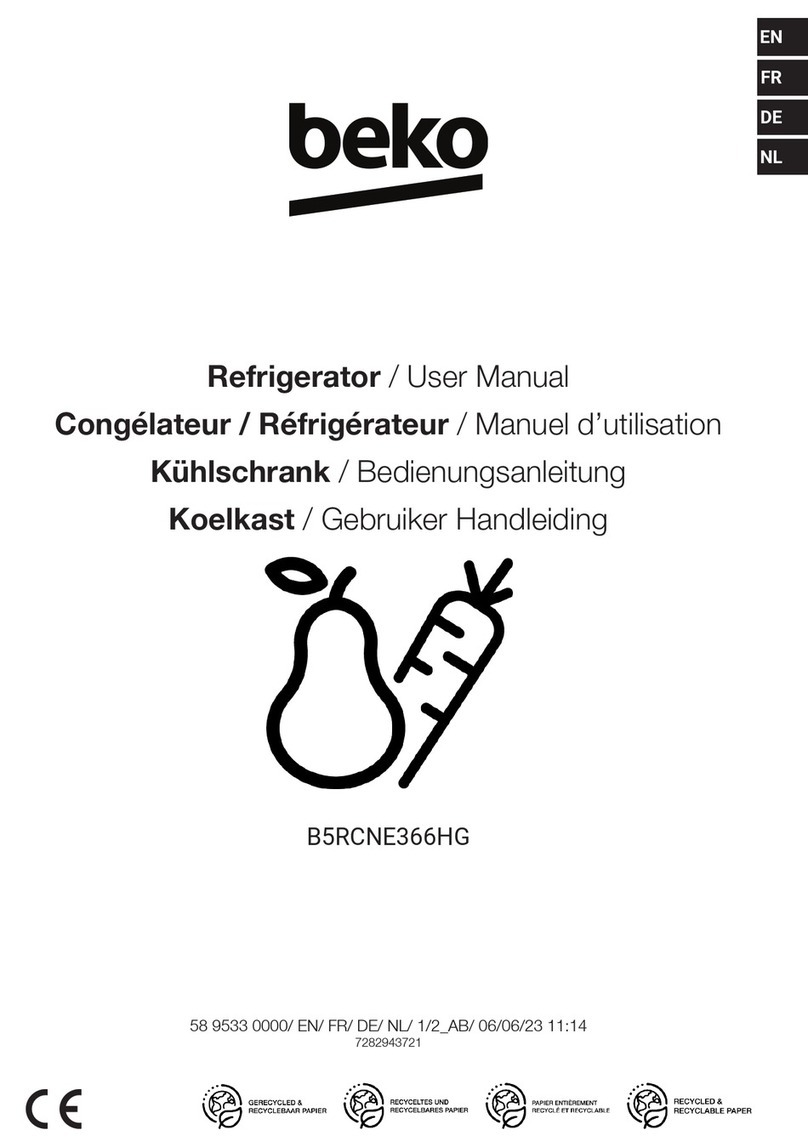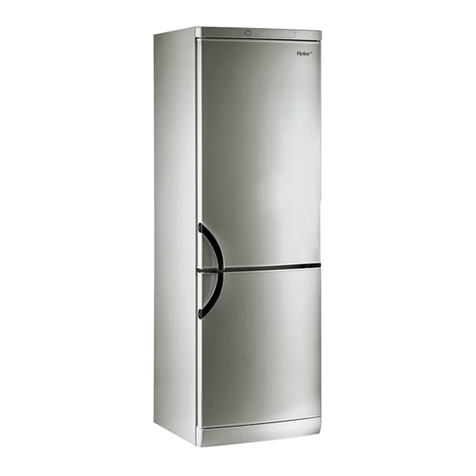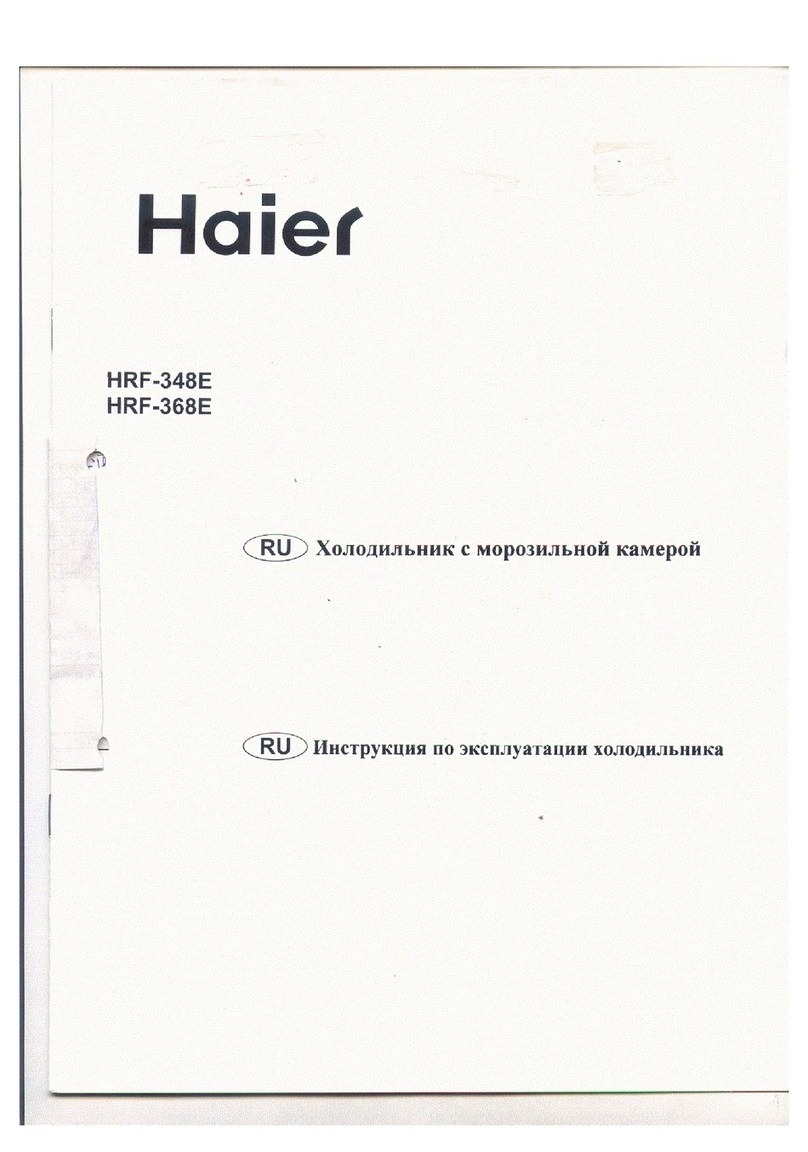
3
and in good quality.
•Food should be separated into portions
according to the daily or meal needs.
•Even if food will be stored for a short period,
food should be wrapped so that will not leak
air to prevent drying. Packing materials should
be resistant to cold, being torn, moisture, odor,
oil and acid. And also should not let air-pass
through. Besides they should be closed well,
handy and made of convenient material for
using in the deep freezers.
4. Dairy products should be stored in the special
compartment provided in the door liner.
5. Cooked dishes should be stored in airtight
containers.
6. Fresh wrapped products can be kept on the
shelf. Fresh fruit and vegetables should be
cleaned and stored in the crisper bins.
7. Bottles can be kept in the door section.
8. To store raw meat, wrap in polythene bags
and place on the zero temperature
compartment. Do not allow to come into contact
with cooked food, to avoid contamination. For
safety, only store raw meat for two to three
days.
9. For maximum efficiency, the removable
shelves should not be covered with paper or
other materials to allow free circulation of cool
air.
10. Do not keep vegetable oil on door shelves.
Keep the food packed, wrapped or covered.
Allow hot food and beverages to cool before
refrigerating. Leftover canned food should not
be stored in the can.
11. Fizzy drinks should not be frozen and
products such as flavoured water ices should
not be consumed too cold.
12. Some fruit and vegetables suffer damage
if kept at temperatures near 0 °C. Therefore
wrap pineapples, melons, cucumbers,
tomatoes and similar produce in polythene
bags and store in vegetable crisper.
13. High-proof alcohol must be stored upright
in tightly closed containers. Never store
products that contain an inflammable propellant
gas (e.g. cream dispensers, spray cans, etc.)
or explosive substances. These are an
explosion hazard.
Suggested arrangement of
food in the appliance
Guidelines for obtaining optimum storage and
hygiene:
1. The fridge compartment is for the short-
term storage of fresh food and drinks.
2. The freezer compartment is rated
and suitable for the freezing and storage of
pre-frozen food. The recommendation for
storage as stated on the food
packaging should be observed at all times.
3.•Hot meals should be cooled down to room
temperature before putting into the refrigerator.
•Food that you want to freeze should be fresh
Getting to know your
appliance (Fig. 1)
Freezer - compartment lighting
Freezer - compartment plastic shelf
Ice - matic water transfer box
Ice – matic
Ice – box
Ice - matic back cover
Ionizer
Odor filters
Bottle - holder shelf
Bottle – holders
Fridge - compartment sliding glass shelf
Fridge - compartment glass shelf
Fridge - compartment lighting
Fridge - compartment crisper glass shelf
Second floor crisper
Humidity filters
Crispers
Lower air - circulation cover
Adjustable front feets
Freezer - compartment door shelf
Egg racks
Fridge - compartment door shelf with slider
Sliding storage boxes
Fridge - compartment door shelf
Bottle holder
Wire frame
Freezer - compartment
Fridge – compartment
1.
2.
3.
4.
5.
6.
7.
8.
9.
10.
11.
12.
13.
14.
15.
16.
17.
18.
19.
20.
21.
22.
23.
24.
25.
26.
27.
28.
Instructions for useGB
